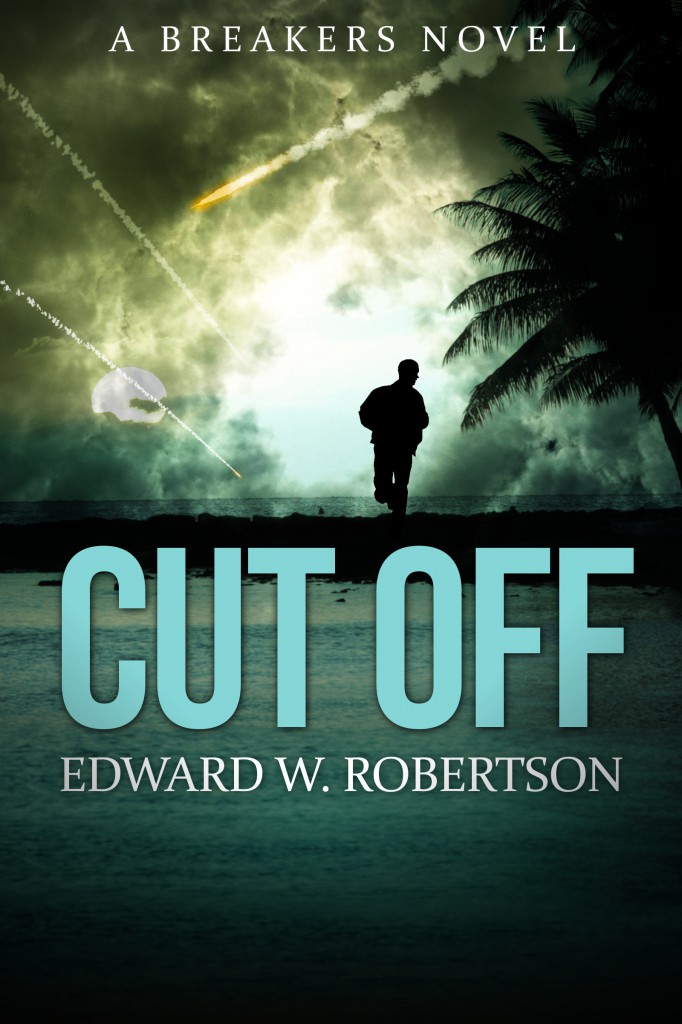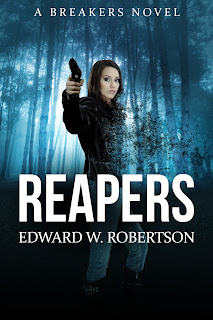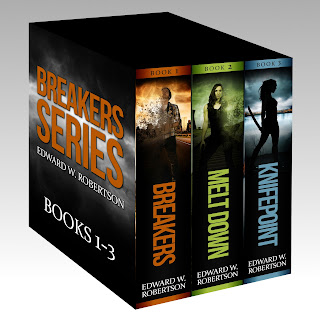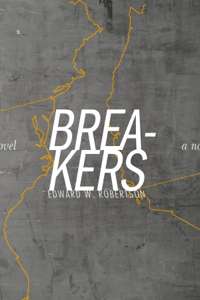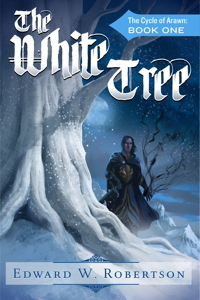Sweet news, people of discerning taste. The wait is over. CAPTIVES: Breakers #6 has come to audiobook. You can find it on Audible, Amazon, and iTunes.
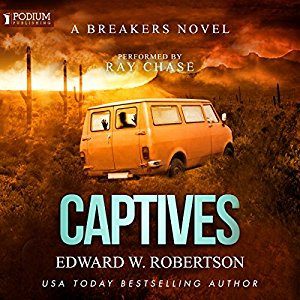 Want some even better news? Book #7 is scheduled to hit audio in December. And Book #8, the finale, should be out early next year. I expect that the only people more excited to have the full series on audio than I am is you all.
Want some even better news? Book #7 is scheduled to hit audio in December. And Book #8, the finale, should be out early next year. I expect that the only people more excited to have the full series on audio than I am is you all.
If you’re new to BREAKERS, it’s a post-apocalyptic series about a small cast of characters who struggle to survive as the world ends — not just once, but twice. The first three audiobooks are available together on Audible for just one credit. That’s 42+ hours of listening. At the moment of this post, the set has 1010 ratings and a 4.3 average. With the remainder of the series on the horizon, now’s a great time to jump in.
Gosh. With sales pitching like that, just imagine how good the writing in the books must be!
From the department of “It’s About Damn Time,” I’m happy to announce I’ve set a new Breakers book helpless into the world. Go catch it! Quick, before it escapes!
______________
AVAILABLE AT:
______________
I’m happy to have added Google Play to my list of distributors. For those of you here for the publishing-related stuff, I’ll try to get up a post about them before too long.
Until then, buy early and buy often!
#9 in SF&F! Whee! #133 in the whole store! Champagne party time!
…so, what does that mean in terms of sales? I have absolutely no idea. Nor what its ranking means on Audible. I do know that, if iTunes’ bestseller lists are straightforward, it’s currently outselling all but one of GRRM’s audiobooks, all the Ender novels, hot new stuff like The Bone Season, etc. Additionally, though it’s not ranked as highly on Audible, its reviews are favorable–4.3 on both story and the narrator’s performance. (And the fact there’s already 15 of them is a positive sign for its early sales totals, too.)
What’s unknowable, of course, is.. well, everything. Would Breakers have done this well if I’d produced it myself? I can’t know. Would its ratings, preliminary as they are, have been on par? Again, absolutely no idea. It does seem that most audiobooks get a lot of visibility purely as new releases, regardless of who published them, and I’ll be surprised if it holds its ranks for too much longer. And while Podium did some marketing for it, it didn’t look like anything overwhelming.
Still, it sure looks like a good start.
Are there tradeoffs? Absolutely. Obviously, I make less per sale. I don’t have direct control of anything. I won’t even know how many it’s selling for some time. Heck, for all I know, Podium is a hyper-elaborate ruse and I’ll never see a dime. That would make this whole post look pretty ridiculous!
All I know is that, right now, it’s doing well, I’m happy with the contract, and that this audiobook wouldn’t exist at all if I hadn’t made this decision.
Yet I know it’s not a decision that would make sense for every single author. That’s why I tried to break down my thinking. I hope it’s useful. Any comments or questions, fire away.
Well, I’ve been pretty quiet lately. As usual, that means one of two things: either the police have finally caught up to me, or I’ve got a new book out. Luckily for me, it’s the latter: Reapers, the newest book in my post-apocalyptic Breakers series. In it, a hunt for a missing person leads former agent Ellie Colson through the wastelands of New York State–and right into the middle of an explosive gang war.
As self-published authors, we don’t talk about failure enough.
Tobias Buckell recently wrote a piece about “survivorship bias” and its relation to self-publishing. He argues that the problem with self-publishing is we only hear from the winners. The survivors. When all you hear about are the successes, your view of how easy it is to succeed will be wildly distorted. His argument is based on this great article from You Are Not So Smart, which you should totally read.
Done? Yay. In response to Buckell, authors on KBoards have raised the interesting counterpoint that literally every single trad-published author is a survivor, meaning their whole perspective is skewed. Which.. is tough to argue with. On the other hand, I don’t think it nullifies his point.
A lot of people are self-publishing. Very few of them do well at it. And you almost never hear–and thus learn–from the failures.
Well, I named this blog Failure Ahoy for a reason. I think failure is awesome! Failure is what happens when you try. Fail enough, and you might even succeed. With that in mind, I’m going to post more about failure. I want to make it okay to suck. I have failed in many ways along my self-publishing journey, but there is no more stark or hilarious an illustration of that failure than my first covers. Man, I might need to brace myself here. Like with tequila.
Okay, ready if you are. Let’s dig up some corpses.
It’s here: book three in the post-apocalyptic Breakers series, Knifepoint. Picking up a few years after the first two books, Knifepoint is the story of the survivors’ struggle for control of Los Angeles, and what it means to grow up in a world where plague and war have killed 99.9% of humankind. Oh, and Walt’s back, too.
Because it’s a new release and I want it to do really really well, it’s just $0.99 this week:
KNIFEPOINT
Amazon | Barnes & Noble | Kobo | Apple
What’s that? You don’t already have the first two books, Breakers and Melt Down? Well, good thing they’re also $0.99 for the next week. Because I love you. If you’ve got any friends who might enjoy the read, now’s a good time to let them know. All three books won’t be on sale together again for a while.
BREAKERS:
Amazon | Barnes & Noble | Kobo | Apple
MELT DOWN:
Amazon | Barnes & Noble | Kobo | Apple
NOTES:
Everything’s now live!
What’s up everyone. For the next few days, I’m going to be selling the two books in my post-apocalyptic Breakers series for $0.99. In these books, a lethal virus reduces the world population to a handful of survivors–and then it gets worse.
I’m running this sale at every store I can–Amazon, Barnes & Noble, iTunes, Kobo, and Smashwords. Whatever your preferred format, it’s available. (Sunday night note: I’ve just changed prices, so not every store may have updated yet, but they should soon.)
Amazon | Barnes & Noble | iTunes | Kobo | Smashwords
Amazon | Barnes & Noble | iTunes | Kobo | Smashwords
I’ve done my best to provide country-appropriate links, but the Kobo links may lead to the US store. Kobo links are hard! If these fail for some reason, please visit Kobo and run a search for “edward w. robertson” and all my books should show up. Same deal on iTunes.
I know some of you already bought Melt Down for a couple bucks more just a couple weeks ago. Oops! I’m still learning how to do this; if this sale performs like I think it may, I’m thinking about running any new release sales like this right off the bat. If you’d like to know about my new releases, please join my mailing list. I only use it to send notice of my new books. No spam. Die, spam.
I know many others of you are authors, and don’t give a damn about what I write or what I price it at. Well, maybe you should! This is part of my ongoing effort to figure out how to sell books in the other stores. If I learn how they work, you know I’ll report back. So if you feel like it, please share.
Thanks in advance.
Over the last few months, I’ve grown disillusioned enough with Amazon Select to pull my book Breakers from the program. Yesterday, its exclusivity expired. Today, Breakers is available on Barnes & Noble for the Nook reader.
It should be in Kobo as well at some point, but it appears to be stuck in publishing at the moment.
Selling beyond Amazon is a tricky proposition. Amazon has a lot of different places for a book to be discovered–bestseller lists for free and paid titles, popularity lists, hot new releases, alsobots, email recommendations, its internal search engine, etc. Between all these venues, as well as the Select program, it’s possible–not easy, but possible–to actively sell your book through a number of different methods. Methods which authors talk about all over the place.
For stores like iTunes and Barnes & Noble, however, the only really effective method I’ve heard about is “write a series and make book one free.” Common wisdom holds it’s possible for romance and erotica to sell well on B&N. Everything else, however, tends to sink into the morass, which is why, when it comes to the non-Amazon storefronts, indie authors’ most common reaction is the e-equivalent of throwing up their hands and muttering to themselves.
Self included. The entirety of my non-Amazon strategy to date has been to make one of my novellas free for nearly a year. That did approximately nothing to spur sales of my other titles, even before I started pulling them to go into Select. And in the first two months since returning to paid, that novella has sold 11 copies on iTunes and 0 on B&N.
In other words, I’m clueless.
But that’s what I’m hoping to address now. I know that Breakers can sell when it’s in front of people, so unlike my other titles, if I can find a way to get it some visibility in the other stores, it should sell. Hypothetically. So how do you find that visibility?
With B&N, new releases appear to get a bit of it. Since going live over there, Breakers has sold 3 copies, which a) I’m almost certain is attributable to being automatically added to the new release listings, and b) has already made me more money than I’ve ever made in a single month at B&N. New releases seem to be listed for up to 90 days over there. The default sorting appears to be by “Top Matches,” whatever that means. It could be an algorithm of some kind, or it could be codeword for “a big publisher paid us for this placement.”
Virtually everything on the first 100 default titles of Science Fiction & Fantasy, All New Releases is a trad book priced between $7.99-14.99. The few exceptions near the top are trad authors publishing short works (Terry Brooks and Laurell K. Hamilton). There are a handful of indies in the last ~30, some of which are free. All of these books have nice sales ranks. If you’ve got a series, it might be smart to start it out in Select, then pull it out once you’ve got 3+ titles and try to create instant momentum for the rest of the series by making the first book free and hoping its New Release placement will pull the rest of your books along behind it.
Beyond that, though, it looks like B&N shoppers have to do some pretty active searching to find any new releases that aren’t big bestsellers. Bummer.
Bestseller rank on B&N is less volatile/more sluggish than on Amazon, by the way. For instance, a single sale of a new release on Amazon would put your initial rank around #50,000; Breakers, with three sales (only one of which might be counted toward its rank) is currently #379,078 on B&N. I saw the same thing with my free title: over the months, roughly 1000 downloads pushed it up to something like #15,000 in the ranks. With no paid sales three months later, it’s still at #51,251.
What this means in practice is it’s harder to attain a high rating, but once you do, it’s easier to stay sticky. This is another reason trad books sell much better there while indie books have a hard time gaining traction. But if you’re an indie with a big old fanbase, you can probably do pretty well for yourself.
Well, none of this is encouraging so far. On the plus side: 3 sales so far isn’t nothing. If I wind up averaging just 1/day at B&N, I’ll consider it a success.
I’ll try to come back to my progress at B&N a week from now. By then, I hope to be up and running at Kobo as well. I’ve also applied to sell directly through iTunes, but I have no idea when or if I’ll be granted access. I probably should have applied for that weeks or months in advance. Learn from my mistakes, people!
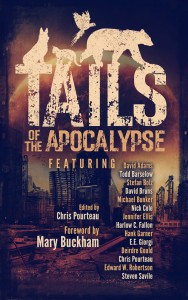 (I don’t know if or when this collection will be out in other formats. However, I think there are still some review copies available, so if you’re not a Kindle user, email me at edwrobertson AT gmail and I’ll see what I can do.)
(I don’t know if or when this collection will be out in other formats. However, I think there are still some review copies available, so if you’re not a Kindle user, email me at edwrobertson AT gmail and I’ll see what I can do.)